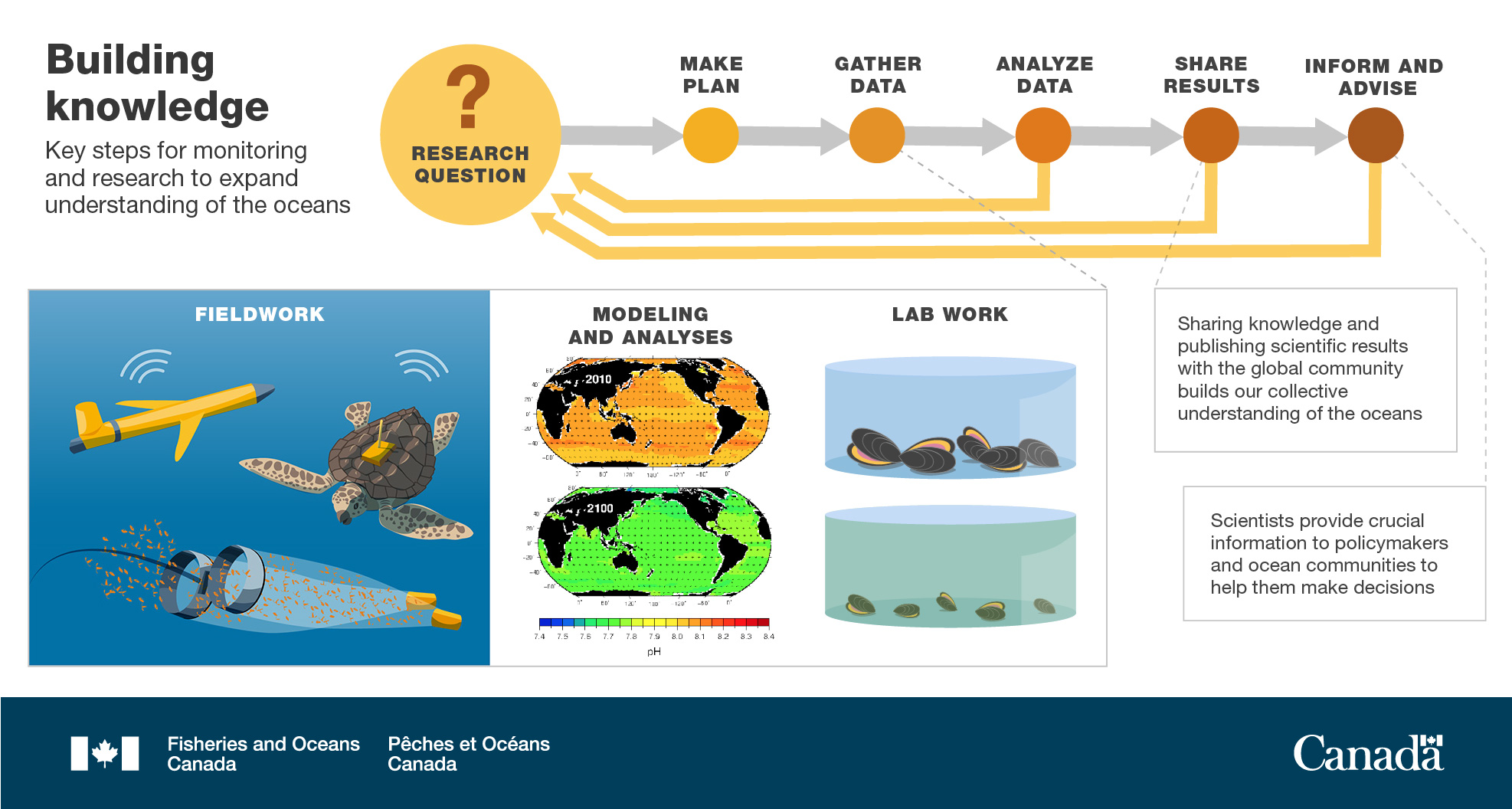Infographic: Building knowledge

Description: Building knowledge
The graphic is showing that scientists build knowledge and expand their understanding of Canada’s oceans with several steps for monitoring and research. The steps are shown using a progression of circles. The first yellow circle says “research question”. grey arrows point to the next coloured circle which reads “make a plan”, a grey arrow points to the next circle with the text “gather data” followed by another circle that reads “analyze data”. A yellow arrows loop back to the first research question circle. The next circle reads “share results” with a yellow arrow that loops back to the research question circle. The last circle in the diagram reads “inform and advise” with another yellow arrow that links back to research question. A box underneath the diagram is linked to the “gather data” circle and shows fieldwork such as an oceanographic clider, a sensor on a turtle and a plankton net. It shows modeling and analyses of global temperature, and lab work of shellfish in a tank. Another box with text is linked to “share results” circle and reads “Sharing knowledge and publishing scientific results with the global community builds our collective understanding of the oceans.” A text box is linked to the “inform and advise” circle and reads “Scientists provide crucial information to policymakers and ocean communities to help them make decisions".
Text
Building knowledge
Key steps for monitoring and research to expand understanding of the oceans
- Research question
- Make plan
- Gather data
- Field work
- Modelling and analyses
- Lab work
- Analyze data
- Share results
- Sharing knowledge and publishing scientific results with the global community builds our collective understanding of the oceans.
- Inform and advise
- Scientists provide crucial information to policymakers and ocean communities to help them make decisions
Related links
- Date modified: